How to Draw Human Body From Behind
Depict the man torso from sight
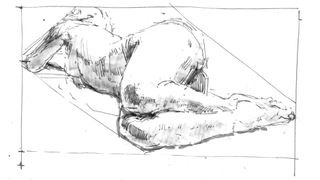
You'd think learning how to draw the human being body from sight would be elementary – after all, we all have one, right? But every bit we all call back nosotros know what the body looks like, when we bring in that prior cognition and end up drawing that rather than the exactitude of the arm or leg that's in front of the states.
This post will teach you how to become circular that mental block, focusing on different techniques and approaches in a step-past-step format. Desire to extend your cartoon in other areas? Run across our roundup of how to draw tutorials. And remember to get yourself the best pencils to draw with, also.
Draw the homo body from sight: how to arroyo it
In that location are a number different approaches to aid you overcome focusing on your prior knowledge and to describe the homo body from sight. Near of them focus on the aforementioned idea: shape drawing rather than object drawing. You need to divorce yourself from the thought that you are drawing a figure every bit much equally possible, and instead really concentrate on the shape it makes. Spend longer looking at your figure and much less time looking at your paper. Depict the figure like a jigsaw, working from the centre outward until you lot notice its edges, and if you are going to focus on the outline, draw the space that the effigy makes with is surrounding, rather than the figure. Small shapes connected together will find the big shapes and will generally improve your proportions.
By combining all of these techniques, you will experience confident enough to be able to tackle any effigy, regardless of age, build or gender. Nonetheless, children are 1 of the most difficult things that you can draw, largely considering of their subtlety, and information technology's often what you go out out rather than what you put into the drawing that makes it work.
Now, read on for the step-past-stride approach to drawing the man torso from sight.
01. Try blind drawing
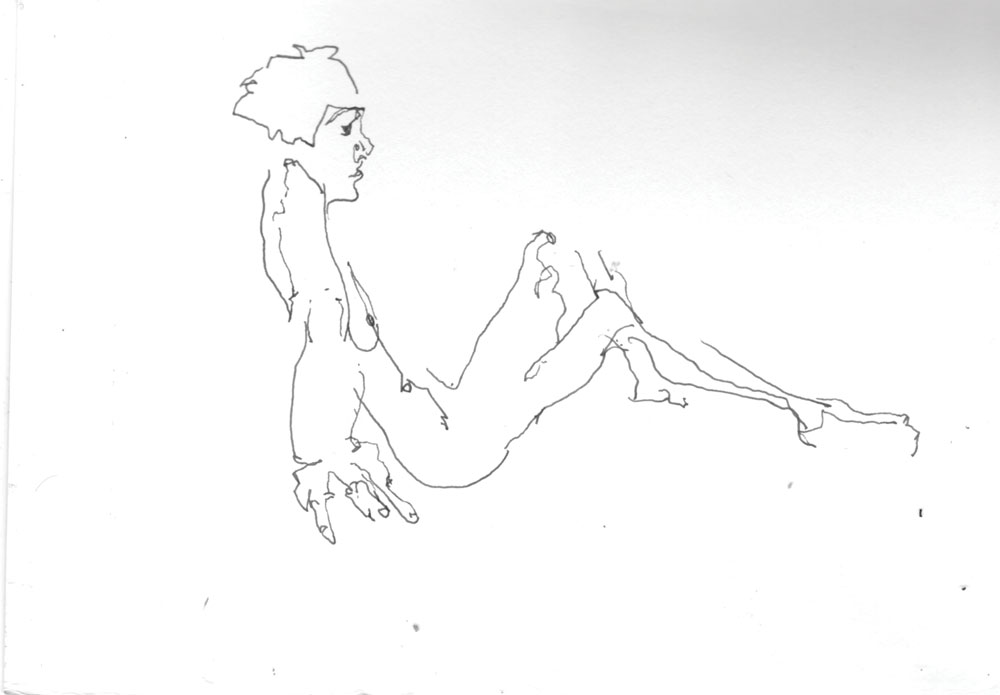
Imagine that you are an emmet crawling across the figure and your eye is following its journey with your paw slowly tracing the path, travelling at the same speed. Draw beyond the creases and folds of underlying muscle, shadows and internal structures, and then avoid your attention abroad from the object being fatigued.
02. Sneek a partial peek
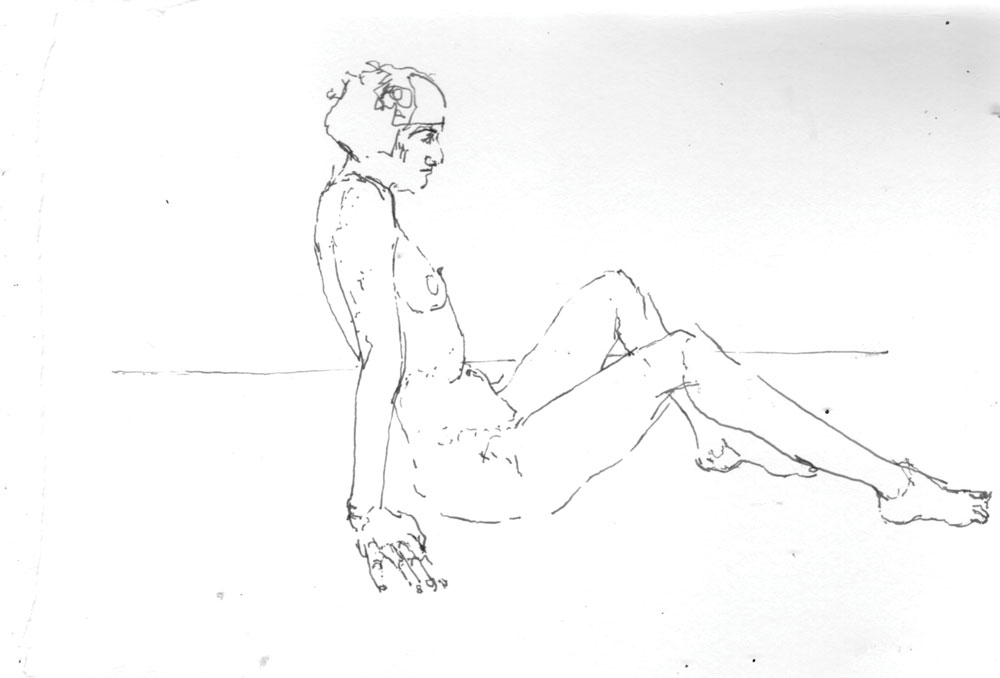
Once yous take mastered blind drawing, you can wait a petty bit at the cartoon you are making. To make sure you describe the homo trunk from sight and non your mind's eye, you need to irksome downwards and take time to await much more carefully, spending longer looking at the model. Think nigh the nature of the grade yous're cartoon – do you modify the force per unit area of your hand when there is a hard structure in the body, where os comes closest to the surface of the skin? Do you utilize your line to draw the difference between a muscle under tension, or is there a more relaxed line for a soft form? If yous look at the drawings of Howard Tangye or Egon Schiele, you can run across how lines are can exist used to articulate these differences.
03. Class the bones shape
Stride a
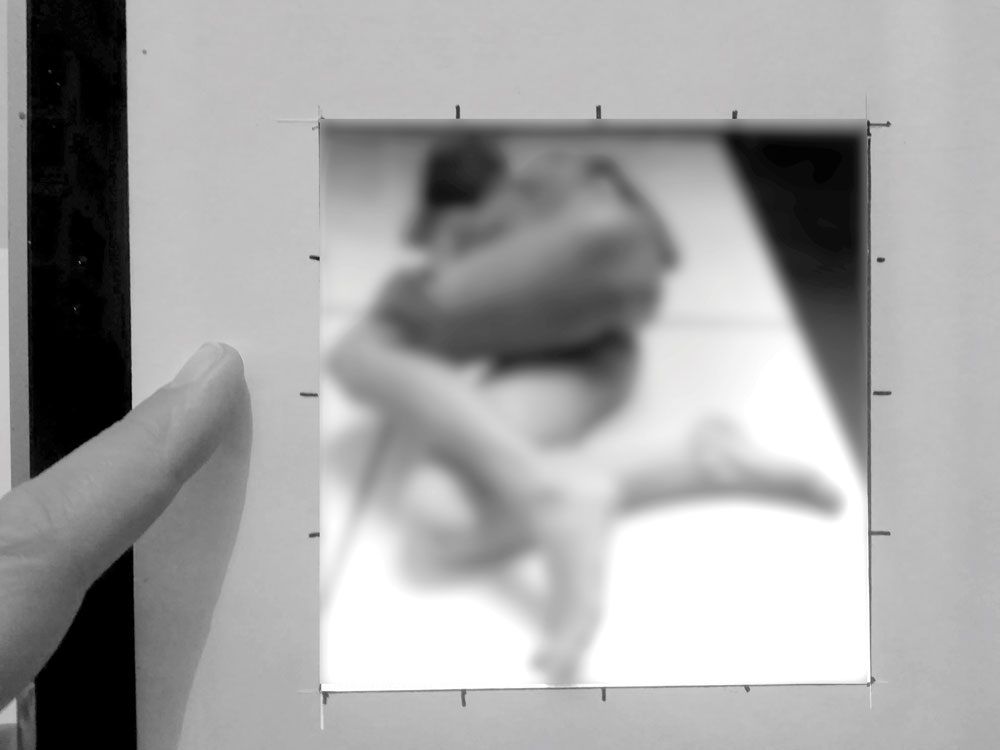
(Paradigm: © Phillip Tyler)
Cutting a square discontinuity cut out of card. Mark the middle and the quarter points on the frame nearest the discontinuity. Hold this up to the model and try to go it to touch as many of the outer edges equally you tin can. Where does the figure touch the sides?
Step b
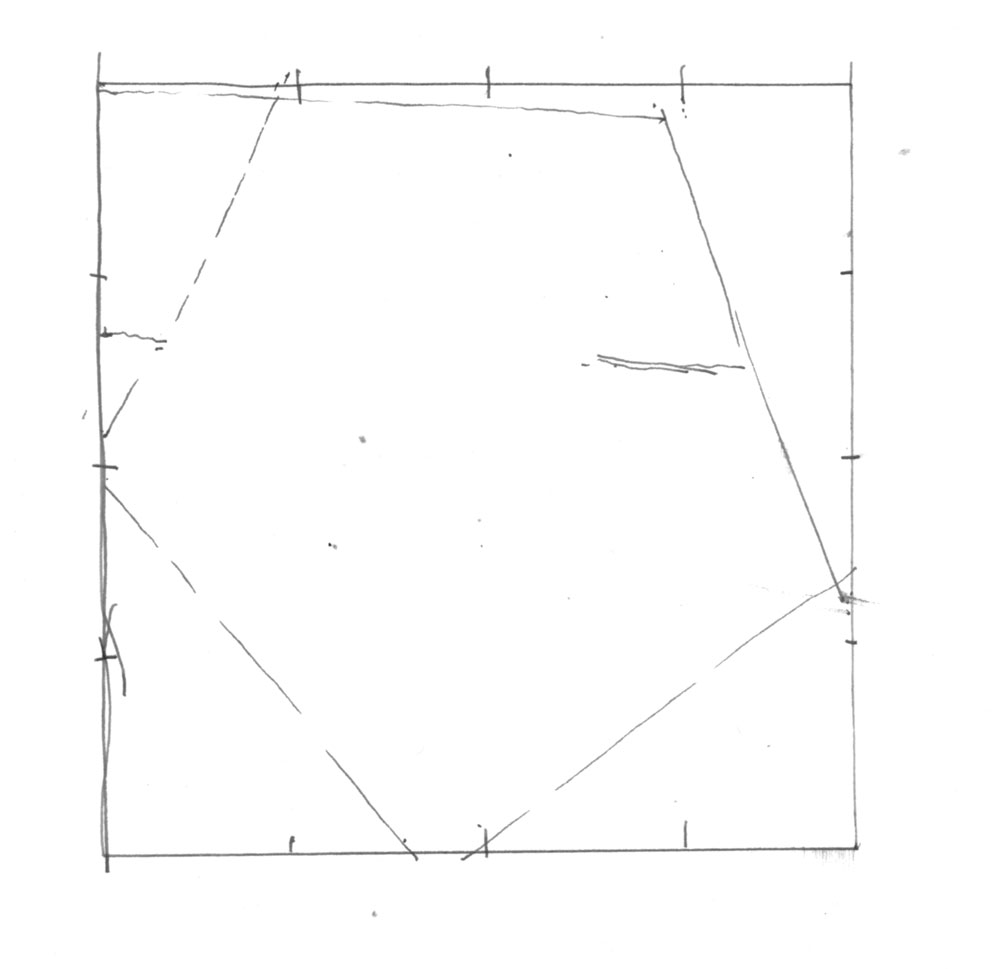
(Image: © Phillip Tyler)
Cutting a foursquare discontinuity cut out of card. Mark the middle and the quarter points on the frame nearest the aperture. Hold this up to the model and try to get information technology to affect every bit many of the outer edges as you can. Where does the figure touch on the sides?
Footstep c
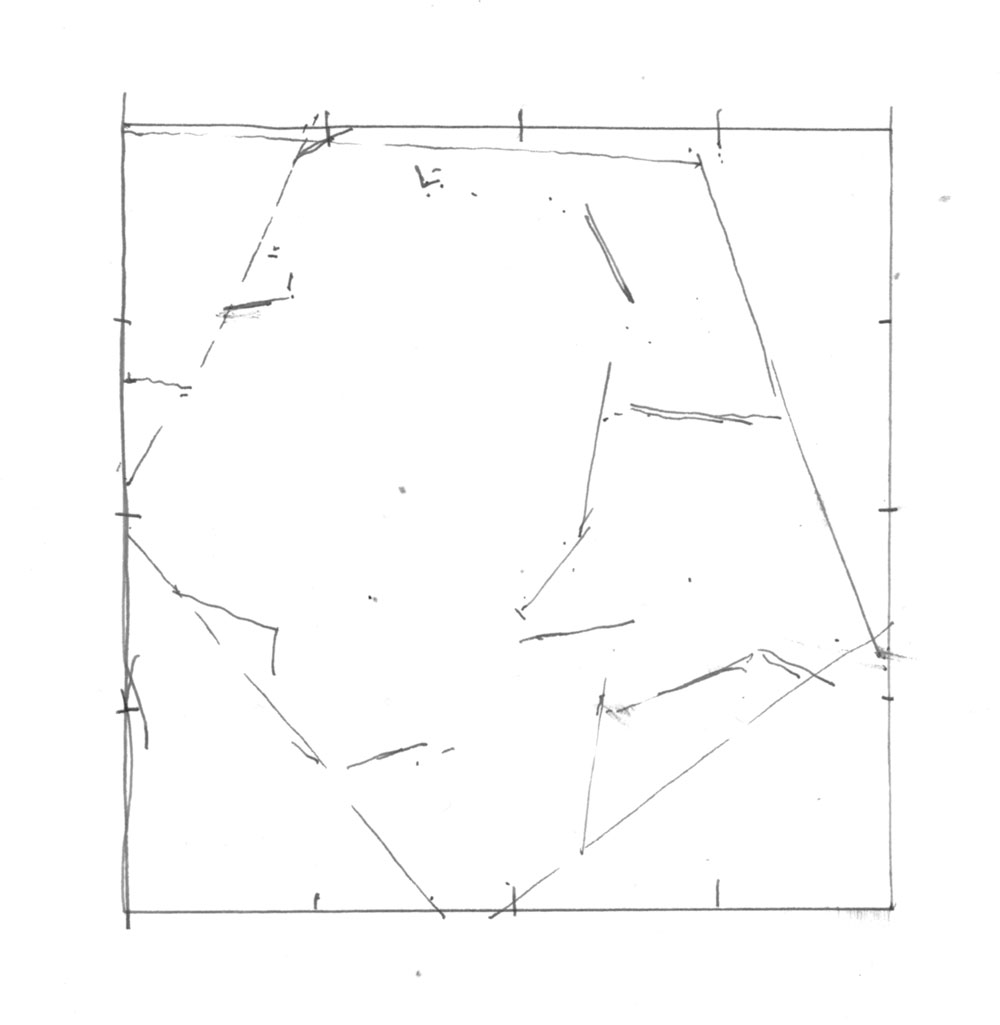
(Image: © Phillip Tyler)
Once these lines are in position, you can start to discover the smaller shapes that lie within the larger ones.
Step d
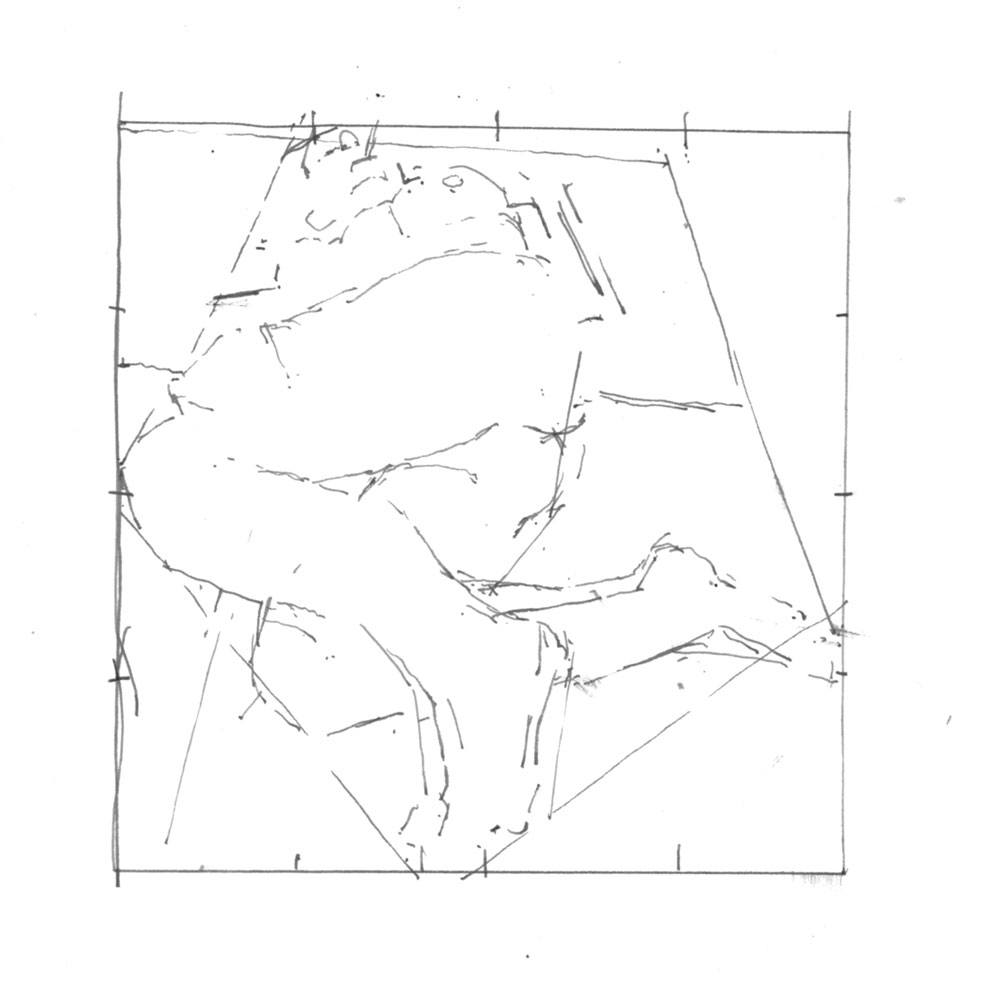
(Image: © Phillip Tyler)
Focus on the negative space, gradually narrowing down the refinement to find the edges and the interrelationship between the whole figure. Don't be scared to make changes to your drawing every bit yous go.
Stride e
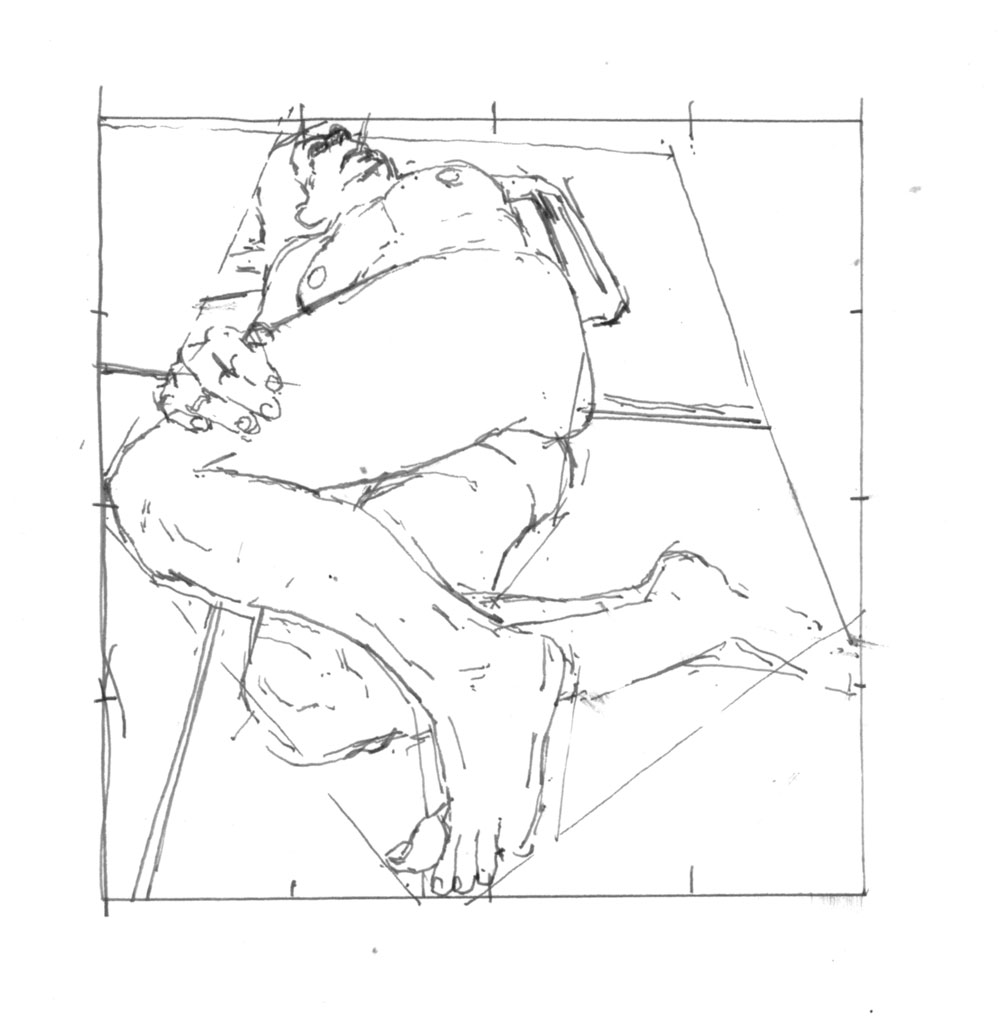
(Prototype: © Phillip Tyler)
Once you starting time to map out the figure, run across which parts correspond to a vertical running through it. Transfer this information to the drawing, so do the same with a horizontal. Charcoal is an first-class medium for this as it is then like shooting fish in a barrel to build upward a fragile serial of reference lines. Your eye is much better at perceiving the departure between two triangles, the height, angle, proportion and and so on, so past focusing wholly on the myriad shapes backside the effigy you tin can depict the effigy almost accidentally as a upshot of not thinking almost it at all.
Pace f
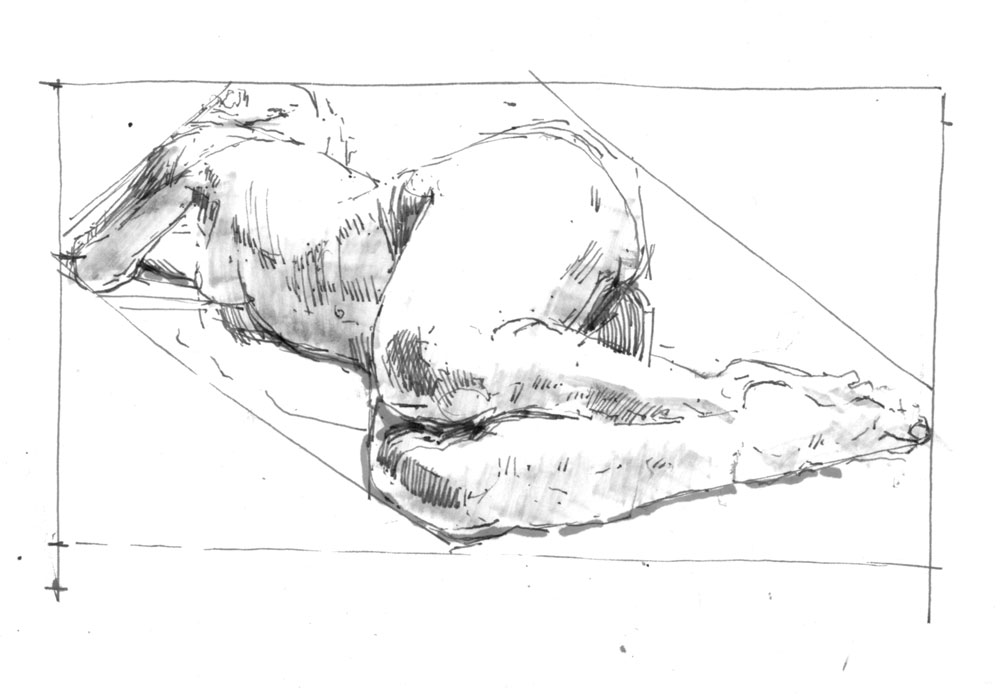
(Epitome: © Phillip Tyler)
Euan Uglow would identify his model next to a radiator and use its vertical divisions to aid locate the effigy. The more than yous mensurate, the more y'all see a grid in front of yous as you draw.
04. Take measurements
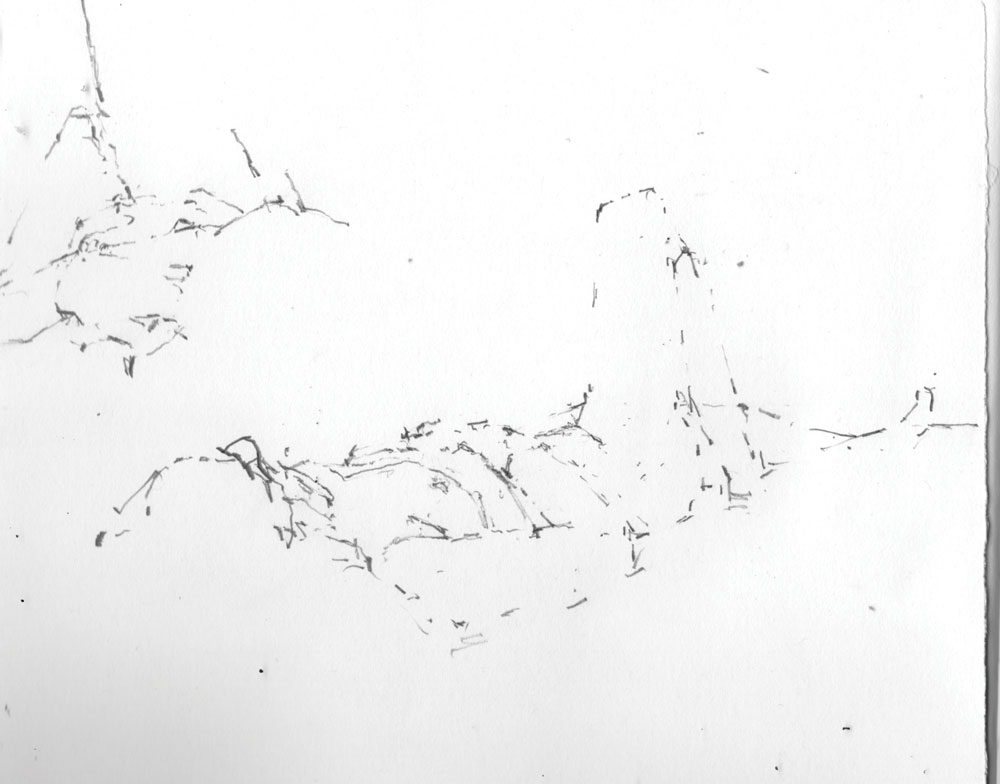
Make certain to position yourself then that you can see both your model and your cartoon without moving your caput. This volition mean that yous can minimise the distance that your eye has to travel between the subject and the paper. You can take vertical heights directly across from the figure to the drawing. Concur the pencil to the angle you are measuring and move this across to your cartoon. Any turning action of the arm tin can be felt in the forearm muscles, which volition tell y'all that the angle has changed. Start a measured cartoon with the complicated parts of the figure, where at that place are lots of unlike things going on, rather than at the extremities.
05. Contour
Step a
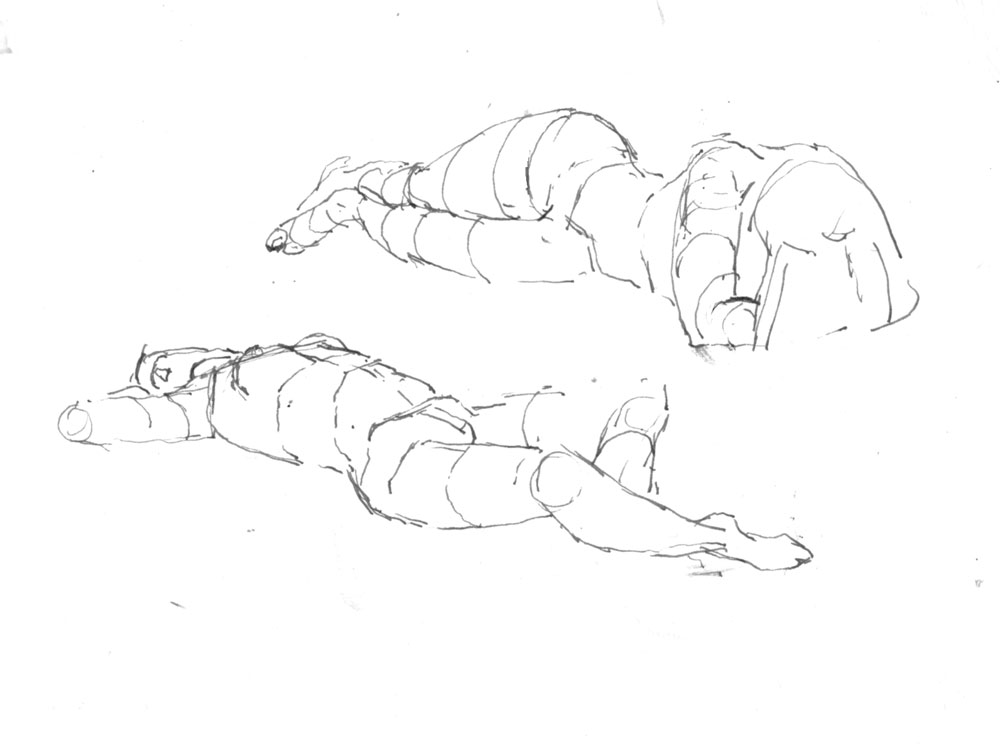
(Epitome: © Phillip Tyler)
Y'all can project a serial of directly parallel lines onto the figure using acetate and an overhead projector, a slide projector or a data projector in a darkened room. These lines will show the undulation of the class that you are looking at more clearly. Alternatively, y'all could enquire the model to wear a tight-fitting striped or checked pinnacle and trousers that follow the contours of the figure.
It is a proficient idea to expect at the figure from 360 degrees as you describe, as moving looking at it from unlike angles volition help you empathize what you're looking at. You lot can too consider drawing the figure using a serial of basic forms like cubes and cylinders, also as spherical objects. This simplification will help you call up nearly the joint and the direction of the effigy as it occupies three-dimensional infinite.
Step b
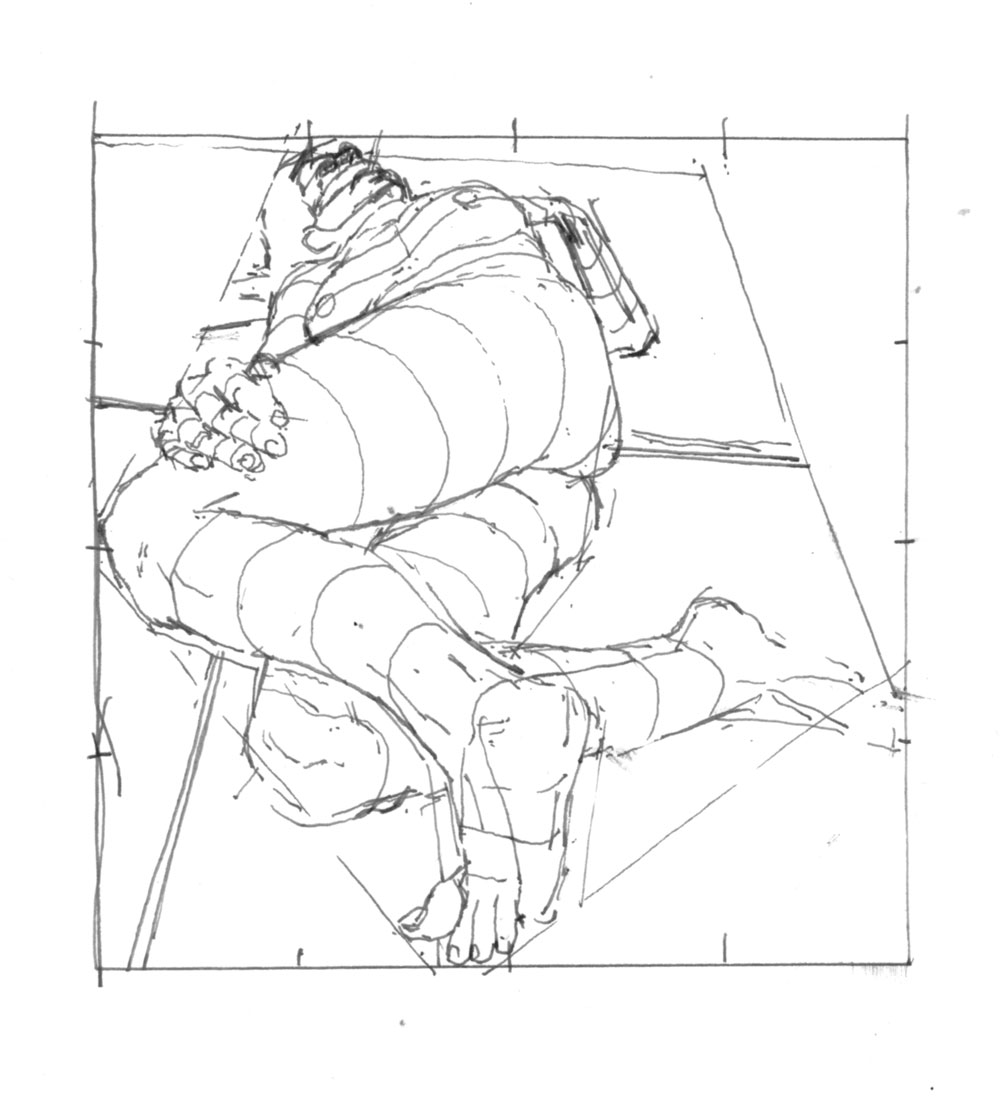
(Image: © Phillip Tyler)
Going back to the basic shape drawing, call back near how straight lines would curve over the body. This is a mental practise as you call back your way over the form. Draw each line carefully and give consideration to management and magnitude.
Step c
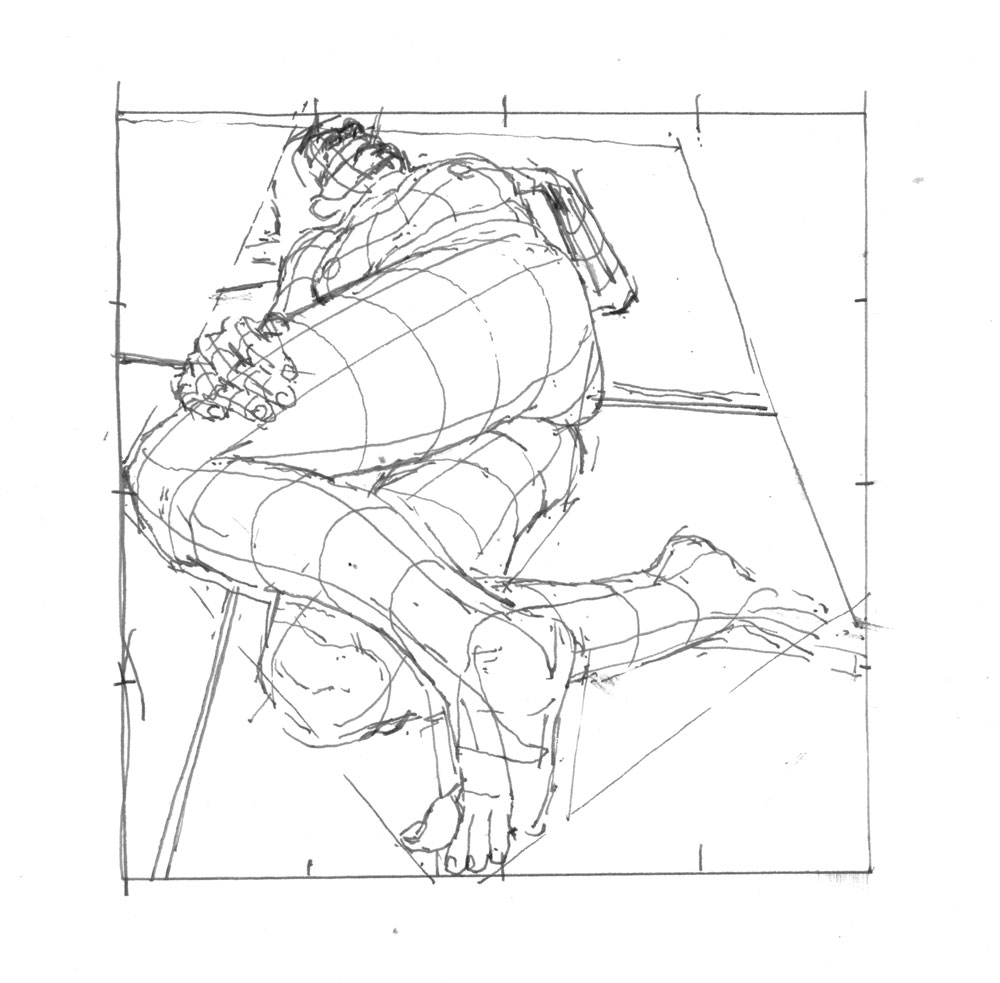
(Prototype: © Phillip Tyler)
Having moved in ane direction over the effigy, you can so draw in the opposite direction, constructing a filigree or mesh.
Step d
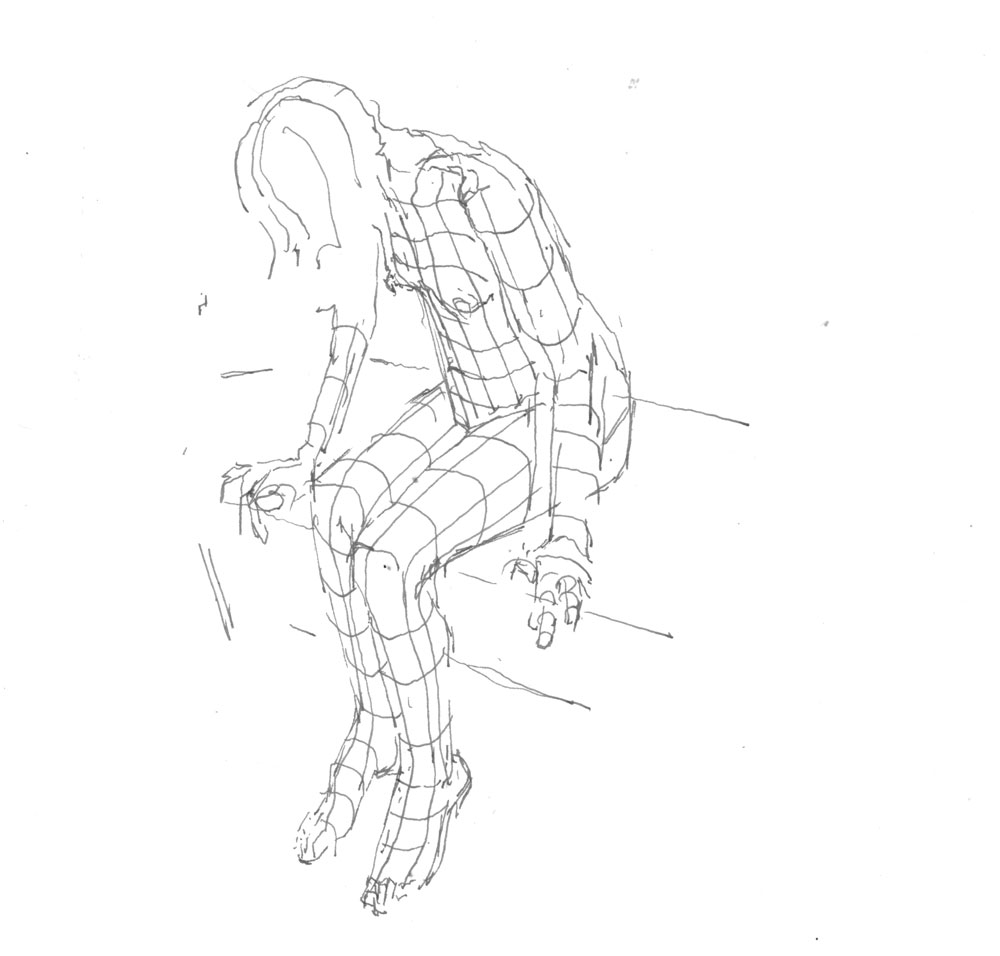
(Image: © Phillip Tyler)
The more you practice this and the more than you connect the tactile feeling of your own body with the model you are looking at, the more you lot will see the contours. As yous develop these skills of looking at the basic proportions of the figure and seeing them merely, y'all can work much more freely with more expressive media every bit y'all draw these basic forms, thinking well-nigh the figure equally clear the mass, weight and dynamism of the homo form.
This content originally appeared in Pigment & Draw: Oils. You tin buy the Oils bookazine here . Or explore the residual of the Paint & Draw bookazines .
Read more:
- Art techniques: expert tutorials for painting and cartoon
- How to draw a figure: Gesture drawing – The beginner's guide
- How to draw a head: A complete guide
Related manufactures
mcilwraithspor1964.blogspot.com
Source: https://www.creativebloq.com/how-to/draw-the-human-body-from-sight